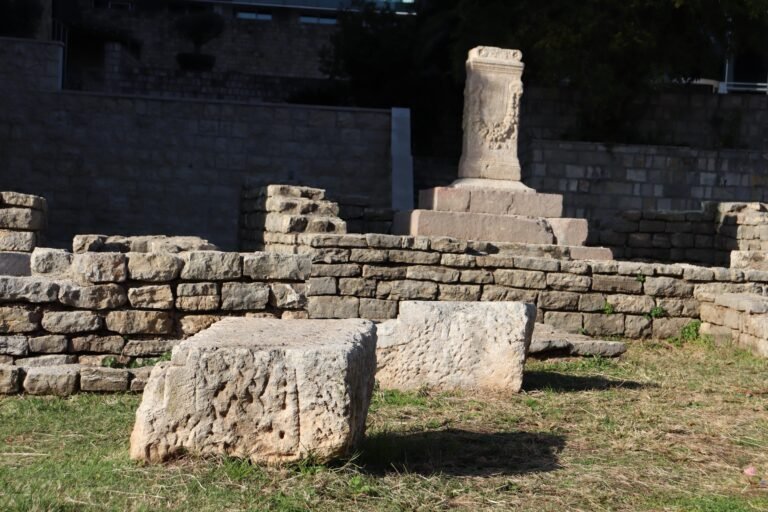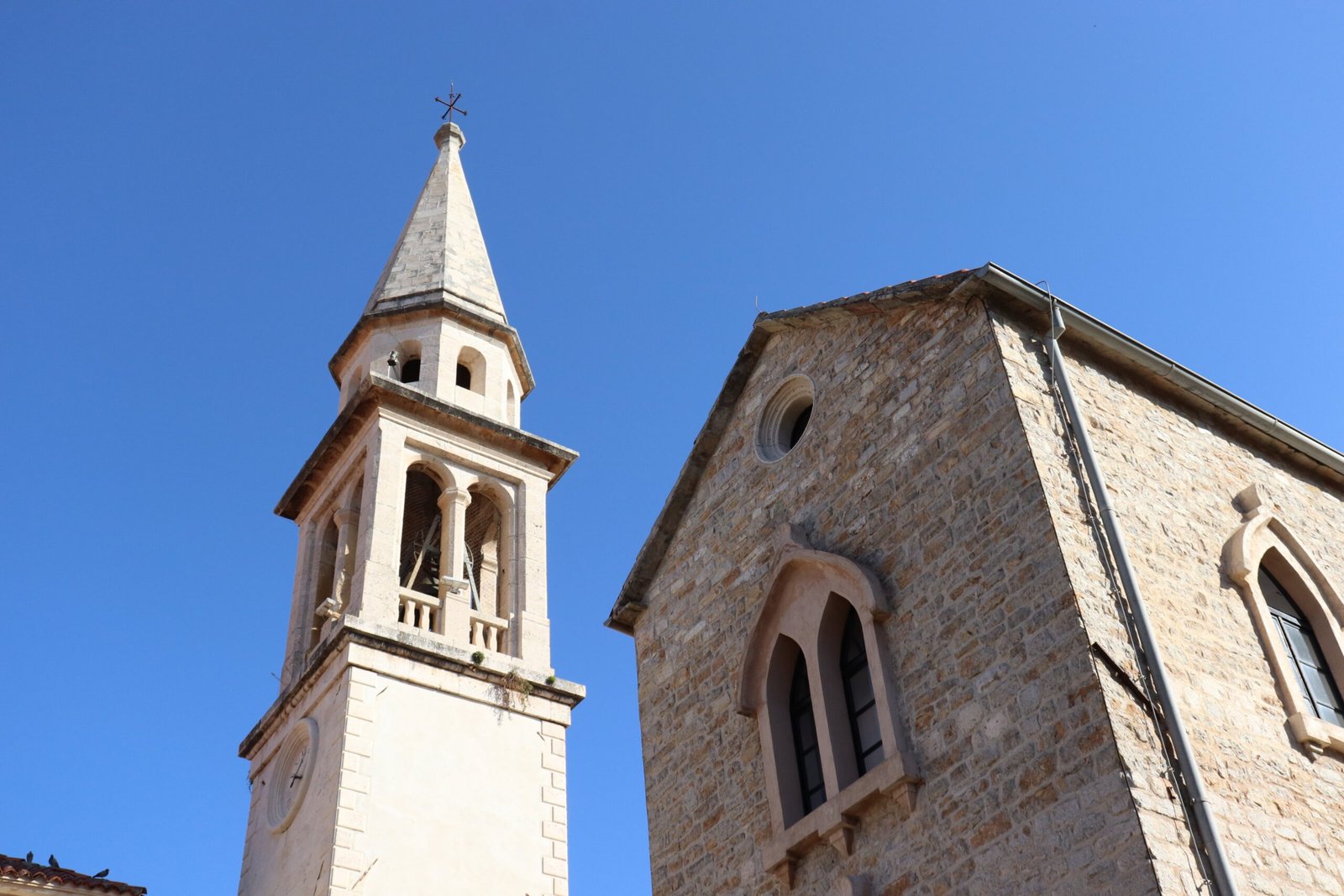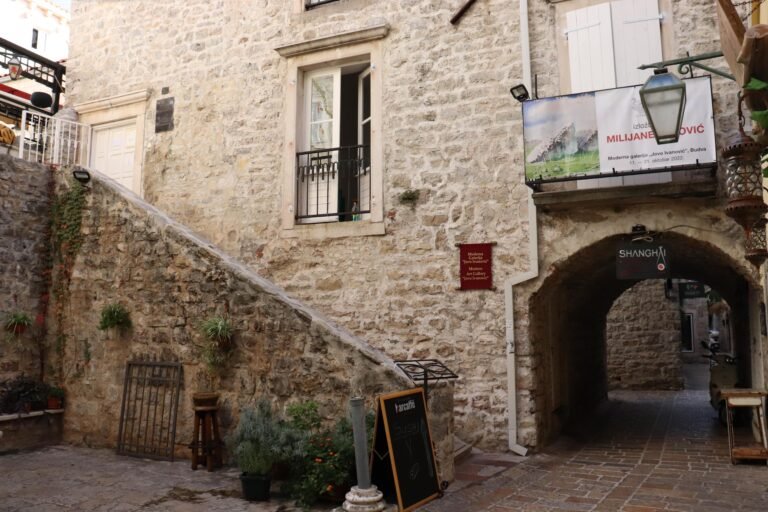Jedinstvena crkva Svetog Ivana Krstitelja je za vrijeme svog postojanja doživjela veliki broj značajnih izmjena. Crkva je prvobitno izgrađena tokom VII vijeka nove ere kao jednobrodna građevina, u specifičnom istorijskom kontekstu, kada se oblast budvanskog primorja nalazila pod upravom vizantijskog carstva. Tokom IX vijeka, dolaskom benediktinaca, Budva postaje značajan hrišćanski centar, a crkva Svetog Ivana Krstitelja trasnformiše se u gradsku katedralu. Njen sadašnji izgled proistekao je iz obnove nakon zemljotresa iz 1667. Crkveni kompleks se sastoji od tri cjeline – glavne crkve, zvonika (XIX vijek) i biskupskog dvora (XVIII vijek), koje čine jedinstvenu arhitektonsku kompoziciju. U oltarskom dijelu crkve je izložena ikona Bogorodice, Velika Panagija iz XIV vijeka, poznata pod nazivom budvanska Madona – koja predstavlja jedinstven primjer srednjovjekovne ikonografije sa ovog dijela Mediterana. Prema istorijskim podacima saznajemo da se ikona nekada nalazila u crkvi Santa Maria in Punta i da je bila izuzetno značajna hodočasnička relikvija.





